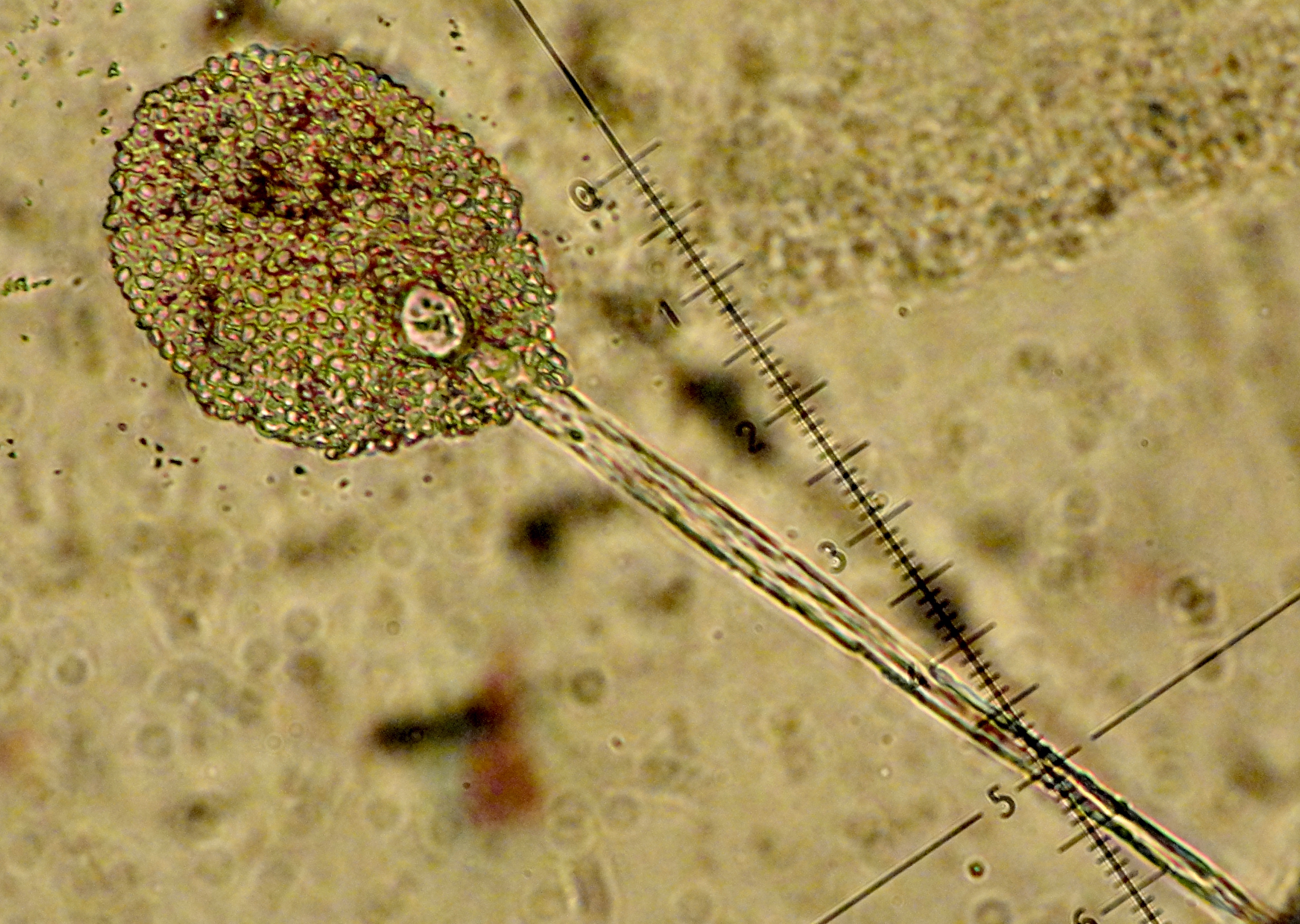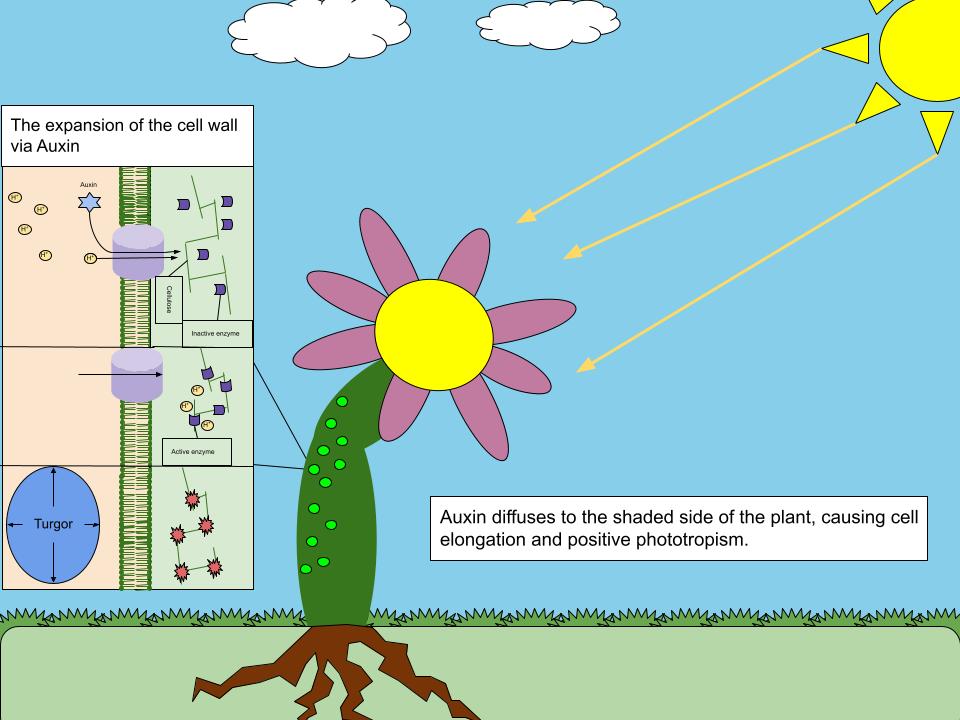|
Protonema
A protonema (plural: protonemata) is a thread-like chain of cells that forms the earliest stage of development of the gametophyte (the haploid phase) in the life cycle of mosses. When a moss first grows from a spore, it starts as a ''germ tube'', which lengthens and branches into a filamentous complex known as a ''protonema'', from which a leafy gametophore, the adult form of a gametophyte in bryophytes, grows. Protonemata are characteristic of all mosses, are present in some liverworts under certain conditions Kohchi, T., Yamato, K. T., Ishizaki, K., Yamaoka, S., & Nishihama, R. (2021). Development and Molecular Genetics of Marchantia polymorpha. Annual Review of Plant Biology, 72(1), 677–702. https://doi.org/10.1146/annurev-arplant-082520-094256 but are absent from hornworts. The protonemata are composed of two cell types: chloronemata, which form upon germination of the spore, and caulonemata, which later differentiate from chloronemata under the influence of plant hormone a ... [...More Info...] [...Related Items...] OR: [Wikipedia] [Google] [Baidu] |
Moss
Mosses are small, non-vascular plant, non-vascular flowerless plants in the taxonomic phylum, division Bryophyta (, ) ''sensu stricto''. Bryophyta (''sensu lato'', Wilhelm Philippe Schimper, Schimp. 1879) may also refer to the parent group bryophytes, which comprise Marchantiophyta, liverworts, mosses, and hornworts. Mosses typically form dense green clumps or mats, often in damp or shady locations. The individual plants are usually composed of simple leaf, leaves that are generally only one cell thick, attached to a plant stem, stem that may be branched or unbranched and has only a limited role in conducting water and nutrients. Although some species have conducting tissues, these are generally poorly developed and structurally different from similar tissue found in vascular plants. Mosses do not have seeds and after fertilisation develop sporophytes with unbranched stalks topped with single capsules containing sporangium, spores. They are typically tall, though some species ar ... [...More Info...] [...Related Items...] OR: [Wikipedia] [Google] [Baidu] |
Gametophore
Gametophores are prominent structures in seedless plants on which the reproductive organs are borne. The word gametophore and ‘-phore’ (Greek Φορά, "to be carried"). In mosses, liverworts and ferns (Archegoniata), the gametophores support gametangia (sex organs, female archegonia and male antheridia). If both archegonia and antheridia occur on the same plant, it is called monoicious. If there are separate female and male plants they are called dioicious. In Bryopsida the leafy moss plant (q. v. " Thallus") is the haploid gametophyte A gametophyte () is one of the two alternating multicellular phases in the life cycles of plants and algae. It is a haploid multicellular organism that develops from a haploid spore that has one set of chromosomes. The gametophyte is the se .... It grows from its juvenile form, the protonema, under the influence of phytohormones (mainly cytokinins). Whereas the filamentous protonema grows by apical cell division, the gamet ... [...More Info...] [...Related Items...] OR: [Wikipedia] [Google] [Baidu] |
Gametophyte
A gametophyte () is one of the two alternating multicellular phases in the life cycles of plants and algae. It is a haploid multicellular organism that develops from a haploid spore that has one set of chromosomes. The gametophyte is the sexual phase in the life cycle of plants and algae. It develops sex organs that produce gametes, haploid sex cells that participate in fertilization to form a diploid zygote which has a double set of chromosomes. Cell division of the zygote results in a new diploid multicellular organism, the second stage in the life cycle known as the sporophyte. The sporophyte can produce haploid spores by meiosis that on germination produce a new generation of gametophytes. Algae In some multicellular green algae ('' Ulva lactuca'' is one example), red algae and brown algae, sporophytes and gametophytes may be externally indistinguishable (isomorphic). In ''Ulva'', the gametes are isogamous, all of one size, shape and general morphology. Land plant ... [...More Info...] [...Related Items...] OR: [Wikipedia] [Google] [Baidu] |
Cytokinin
Cytokinins (CK) are a class of plant hormones that promote cell division, or cytokinesis, in plant roots and shoots. They are involved primarily in Cell (biology), cell growth and cellular differentiation, differentiation, but also affect apical dominance, axillary bud growth, and leaf plant senescence, senescence. There are two types of cytokinins: adenine-type cytokinins represented by kinetin, zeatin, and 6-benzylaminopurine, and phenylurea-type cytokinins like diphenylurea and thidiazuron (TDZ). Most adenine-type cytokinins are synthesized in roots. Cambium (botany), Cambium and other actively dividing tissues also synthesize cytokinins. No phenylurea cytokinins have been found in plants. Cytokinins participate in local and long-distance signalling, with the same transport mechanism as purines and nucleosides. Typically, cytokinins are transported in the xylem. Cytokinins act in concert with auxin, another plant growth hormone. The two are complementary, having generally ... [...More Info...] [...Related Items...] OR: [Wikipedia] [Google] [Baidu] |
Physcomitrella Protonema
''Physcomitrella'' is a genus of mosses, containing two species. ''Physcomitrella patens'' is a model organism in laboratory research. '' Physcomitrella readeri'' is fairly similar, distinguished only by subtle characteristics. In fact, it has often been debated whether they should rightly be considered separate species, or a single species. ''Physcomitrella'' has been used as a model organism. It diverged from the flowering plants over 400 million years ago, so the difference between the groups indicates the changes in the genome A genome is all the genetic information of an organism. It consists of nucleotide sequences of DNA (or RNA in RNA viruses). The nuclear genome includes protein-coding genes and non-coding genes, other functional regions of the genome such as ... that accompanied the adaptation of plants to living on land. References Moss genera Funariales {{Bryopsida-stub ... [...More Info...] [...Related Items...] OR: [Wikipedia] [Google] [Baidu] |
Cell (biology)
The cell is the basic structural and functional unit of all life, forms of life. Every cell consists of cytoplasm enclosed within a Cell membrane, membrane; many cells contain organelles, each with a specific function. The term comes from the Latin word meaning 'small room'. Most cells are only visible under a light microscope, microscope. Cells Abiogenesis, emerged on Earth about 4 billion years ago. All cells are capable of Self-replication, replication, protein synthesis, and cell motility, motility. Cells are broadly categorized into two types: eukaryotic cells, which possess a Cell nucleus, nucleus, and prokaryotic, prokaryotic cells, which lack a nucleus but have a nucleoid region. Prokaryotes are single-celled organisms such as bacteria, whereas eukaryotes can be either single-celled, such as amoebae, or multicellular organism, multicellular, such as some algae, plants, animals, and fungi. Eukaryotic cells contain organelles including Mitochondrion, mitochondria, which ... [...More Info...] [...Related Items...] OR: [Wikipedia] [Google] [Baidu] |
Haploid
Ploidy () is the number of complete sets of chromosomes in a cell (biology), cell, and hence the number of possible alleles for Autosome, autosomal and Pseudoautosomal region, pseudoautosomal genes. Here ''sets of chromosomes'' refers to the number of maternal and paternal chromosome copies, respectively, in each homologous chromosome pair—the form in which chromosomes naturally exist. Somatic cells, Tissue (biology), tissues, and Individual#Biology, individual organisms can be described according to the number of sets of chromosomes present (the "ploidy level"): monoploid (1 set), diploid (2 sets), triploid (3 sets), tetraploid (4 sets), pentaploid (5 sets), hexaploid (6 sets), heptaploid or septaploid (7 sets), etc. The generic term polyploidy, polyploid is often used to describe cells with three or more sets of chromosomes. Virtually all sexual reproduction, sexually reproducing organisms are made up of somatic cells that are diploid or greater, but ploidy level may vary wid ... [...More Info...] [...Related Items...] OR: [Wikipedia] [Google] [Baidu] |
Spore
In biology, a spore is a unit of sexual reproduction, sexual (in fungi) or asexual reproduction that may be adapted for biological dispersal, dispersal and for survival, often for extended periods of time, in unfavourable conditions. Spores form part of the Biological life cycle, life cycles of many plants, algae, fungus, fungi and protozoa. They were thought to have appeared as early as the mid-late Ordovician period as an adaptation of early land plants. Bacterial spores are not part of a sexual cycle, but are resistant structures used for survival under unfavourable conditions. Myxozoan spores release amoeboid infectious germs ("amoebulae") into their hosts for parasitic infection, but also reproduce within the hosts through the pairing of two nuclei within the plasmodium, which develops from the amoebula. In plants, spores are usually haploid and unicellular and are produced by meiosis in the sporangium of a diploid sporophyte. In some rare cases, a diploid spore is also p ... [...More Info...] [...Related Items...] OR: [Wikipedia] [Google] [Baidu] |
Bryophyte
Bryophytes () are a group of embryophyte, land plants (embryophytes), sometimes treated as a taxonomic Division (taxonomy), division referred to as Bryophyta ''Sensu#Common qualifiers, sensu lato'', that contains three groups of non-vascular plant, non-vascular land plants: the Marchantiophyta, liverworts, hornworts, and mosses. In the Sensu#Common qualifiers, strict sense, the division Bryophyta consists of the mosses only. Bryophytes are characteristically limited in size and prefer moist habitats although some species can survive in drier environments. The bryophytes consist of about 20,000 plant species. Bryophytes produce enclosed reproductive structures (gametangia and sporangia), but they do not produce flowers or seeds. They reproduce sexually by spores and asexually by fragmentation or the production of Gemma (botany), gemmae. Though bryophytes were considered a paraphyletic group in recent years, almost all of the most recent phylogenetics, phylogenetic evidence support ... [...More Info...] [...Related Items...] OR: [Wikipedia] [Google] [Baidu] |
Auxin
Auxins (plural of auxin ) are a class of plant hormones (or plant-growth regulators) with some morphogen-like characteristics. Auxins play a cardinal role in coordination of many growth and behavioral processes in plant life cycles and are essential for plant body development. The Dutch biologist Frits Warmolt Went first described auxins and their role in plant growth in the 1920s. Kenneth V. Thimann became the first to isolate one of these phytohormones and to determine its chemical structure as indole-3-acetic acid (IAA). Went and Thimann co-authored a book on plant hormones, ''Phytohormones'', in 1937. Overview Auxins were the first of the major plant hormones to be discovered. They derive their name from the Greek word ( – 'to grow/increase'). Auxin is present in all parts of a plant, although in very different concentrations. The concentration in each position is crucial developmental information, so it is subject to tight regulation through both metabolism and transp ... [...More Info...] [...Related Items...] OR: [Wikipedia] [Google] [Baidu] |
Bryophytes
Bryophytes () are a group of land plants ( embryophytes), sometimes treated as a taxonomic division referred to as Bryophyta '' sensu lato'', that contains three groups of non-vascular land plants: the liverworts, hornworts, and mosses. In the strict sense, the division Bryophyta consists of the mosses only. Bryophytes are characteristically limited in size and prefer moist habitats although some species can survive in drier environments. The bryophytes consist of about 20,000 plant species. Bryophytes produce enclosed reproductive structures ( gametangia and sporangia), but they do not produce flowers or seeds. They reproduce sexually by spores and asexually by fragmentation or the production of gemmae. Though bryophytes were considered a paraphyletic group in recent years, almost all of the most recent phylogenetic evidence supports the monophyly of this group, as originally classified by Wilhelm Schimper in 1879. The term ''bryophyte'' comes . Features The defining ... [...More Info...] [...Related Items...] OR: [Wikipedia] [Google] [Baidu] |





